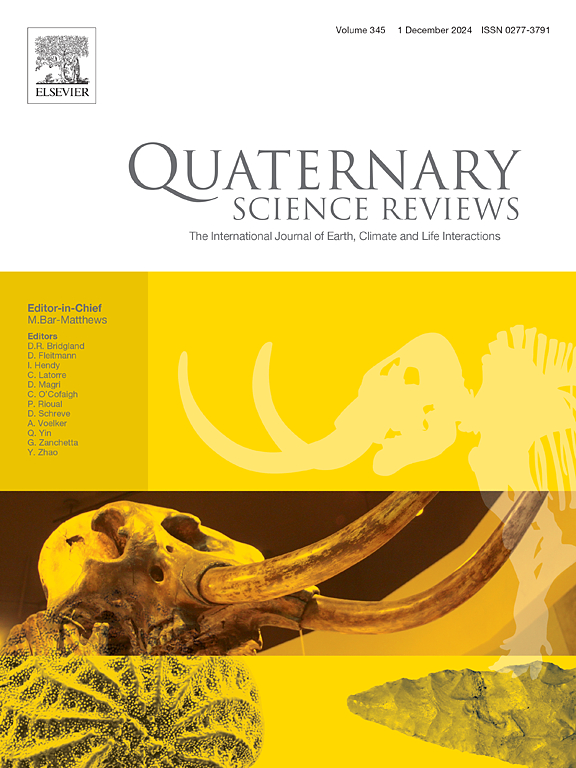Enhanced East Asian summer monsoon circulation during the Early to Middle Bronze Age
IF 3.2
1区 地球科学
Q1 GEOGRAPHY, PHYSICAL
引用次数: 0
Abstract
The Holocene East Asian summer monsoon (EASM) evolution has been extensively investigated, yet proxy records show inconsistent variations during the Bronze Age, and spatial patterns of hydroclimatic conditions remain controversial, limiting our understanding of monsoonal behavior and its potential association with culture development. Here we present multiple biomarker records from the northern coast of the South China Sea, which document the strength of monsoon-induced upwelling/mixing effect, to infer Holocene EASM variability. Our multiple biomarker records consistently indicate enhanced EASM circulation during ∼6000–9000 cal a BP and ∼3300–4500 cal a BP, superimposed on the long-term weakening trend. The enhanced EASM circulation during the Early to Middle Bronze Age challenges the presumed cool/dry climate background and lends support to a tripole pattern of hydroclimatic variability over East China during this period.
青铜时代早期至中期东亚夏季风环流的增强
全新世东亚夏季风(EASM)的演变已经得到了广泛的研究,但代用记录显示青铜时代的变化不一致,水文气候条件的空间模式仍然存在争议,限制了我们对季风行为及其与文化发展的潜在联系的理解。本文利用南海北部海岸的多个生物标志物记录,记录了季风引起的上升流/混合效应的强度,以推断全新世东亚季风变率。我们的多种生物标志物记录一致表明,在~ 6000-9000 cal a BP和~ 3300-4500 cal a BP期间,EASM环流增强,叠加在长期减弱趋势上。青铜器时代早期至中期东亚东部环流的增强挑战了先前假定的冷/干气候背景,并支持了这一时期中国东部水文气候变率的三极模式。
本文章由计算机程序翻译,如有差异,请以英文原文为准。
求助全文
约1分钟内获得全文
求助全文
来源期刊

Quaternary Science Reviews
地学-地球科学综合
CiteScore
7.50
自引率
15.00%
发文量
388
审稿时长
3 months
期刊介绍:
Quaternary Science Reviews caters for all aspects of Quaternary science, and includes, for example, geology, geomorphology, geography, archaeology, soil science, palaeobotany, palaeontology, palaeoclimatology and the full range of applicable dating methods. The dividing line between what constitutes the review paper and one which contains new original data is not easy to establish, so QSR also publishes papers with new data especially if these perform a review function. All the Quaternary sciences are changing rapidly and subject to re-evaluation as the pace of discovery quickens; thus the diverse but comprehensive role of Quaternary Science Reviews keeps readers abreast of the wider issues relating to new developments in the field.
 求助内容:
求助内容: 应助结果提醒方式:
应助结果提醒方式:


